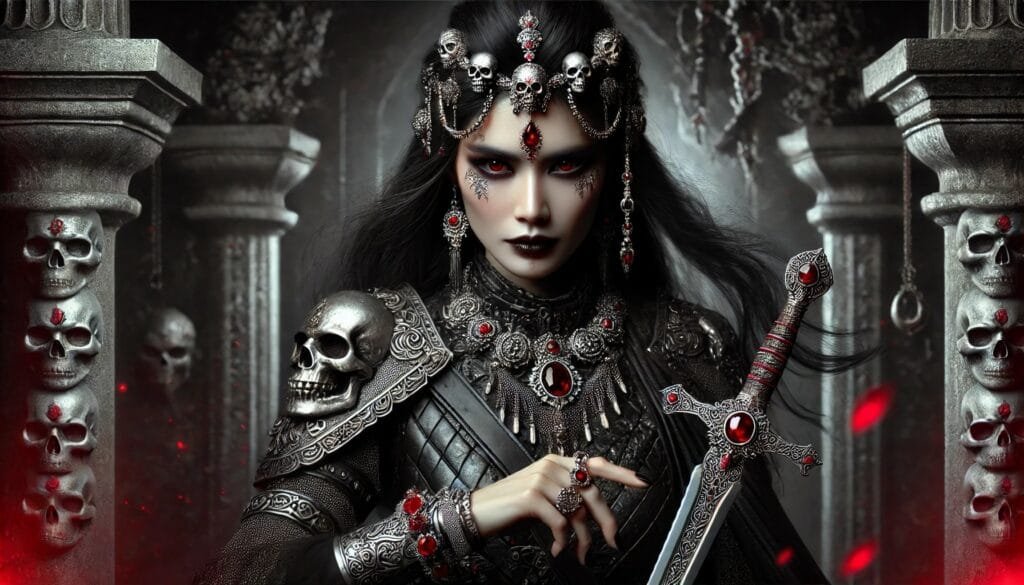Death of the ego: Kālī's skullcap and sword
Death of the ego: Kālī's skullcap and sword
Looking deeper into spirituality, we encounter archetypes that not only complement our everyday lives, but fundamentally change the way we see the world and ourselves. Kālī, one of the most mystical and intense goddesses in Hindu mythology, is such an archetype. She represents destruction and rebirth, fear and liberation - all that holds the greatest challenges and opportunities for spiritual development.
The image of Kālī scares most people. Her dark skin, fierce gaze, outstretched tongue and necklace of skulls do not embody the general goddess ideals. But this necklace is no mere ornament; it has deep symbolism. The skulls that make up the necklace represent the death of the human ego. They refer not to physical death, but to the transformation that occurs when one transcends one's own fears, desires and illusions.
The ego, which is a central element of human existence, is often an obstacle to achieving inner peace and enlightenment. The ego binds us to the outside world, traps us in the material world and separates us from the pure, divine essence of ourselves. Kālī's necklace is a reminder that true spiritual development is not achieved through perfecting the outer world, but through dismantling the ego. This death of ego, however, is not a loss, but a liberation - the opportunity to return to who we really are.
The bloody sword in Kālī's hand is also a powerful symbol. This sword is not a mere weapon, but a carrier of truth. In Hindu philosophy, it is truth (satya) that liberates one from illusion (maya). The sharp blade of the sword symbolises the ability to cut through the veil of ignorance and false belief systems and attain clarity.
The sword is not only used to destroy the false self-image maintained by the ego, but also to remove the veil that covers the soul. It is a reminder that the search for truth is often a painful process that involves letting go of old patterns, fears and attachments. Yet, this pain is part of the transformation and is necessary for one to achieve inner freedom.
In his other hand Kālī holds a severed head, a symbolic offering of the ego. This ego is nothing but a false self-image dominated by ignorance, which distances us from reality. The severed head sends the message that the ego is not an enemy to be destroyed, but an illusion to be recognized. The loss of the head is not destruction, but rebirth - the moment when one realises that one's true self is not the same as personal desires, fears or past experiences.
The symbols of Kālī as a whole represent a process of inner transformation, which is never easy, but always worthwhile. Dismantling the ego and seeking truth can be painful, as it involves leaving comfort zones and facing inner conflicts. However, this transformation is necessary to achieve inner freedom and enlightenment.
Kālī's teaching is therefore nothing more than a reminder that spiritual development cannot be avoided. Confronting fears, illusions and ego traps is the path that ultimately leads to the realisation of the true self. This path is not destruction, but a deep and lasting rebirth - a return to our divine essence.

